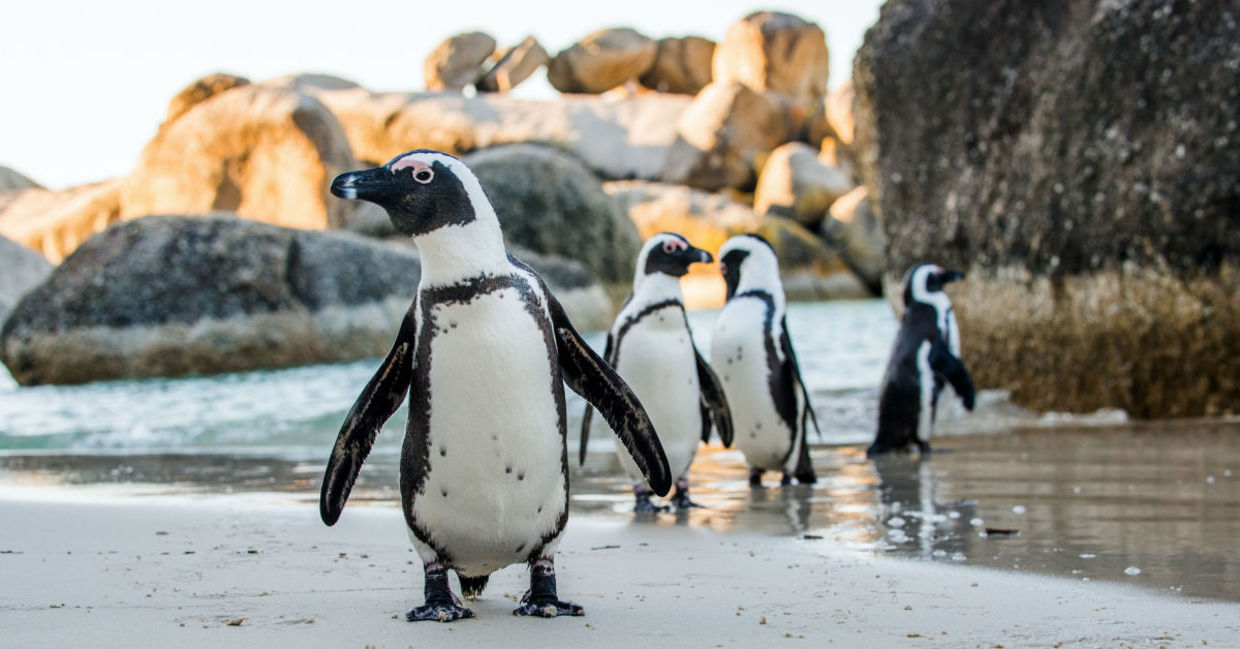
(Sergey Uryadnikov / Shutterstock.com)
Emperor penguins boldly go where no man has gone before. Literally. These waddling, tuxedoed birds live on the remote and frigid Antarctic coasts. Due to the extreme conditions of emperor penguins’ native habitat, some colonies are inaccessible to humans, making these flightless birds hard to study.
The European Space Agency reports that satellites have come to the aid of penguin researchers, scouring Antarctic coasts for colonies visible from space. Thus far, the project has been successful, uncovering that the penguin population is 20 percent larger than researchers originally surmised. And, recently, satellite imagery has revealed a new penguin colony, small, but visible from space, The Guardian reports.
View this post on Instagram
Penguins in the coalmine
According to LiveScience, emperor penguins live on frigid Antarctic coastlines. Their winter breeding grounds are even more extreme. They winter on blocks of ice in the open ocean.
Their preferred habitat means that emperor penguins are vulnerable to warming temperatures and melting sea ice. Although researchers have uncovered more than 60 colonies, many of them are near the edges of penguin’s preferred habitats and breeding zones. Climate change could melt the ice and warm the oceans in these areas, endangering the emperor penguin population.
Philip Trathan, the British Antarctic Survey Head of Conservation Biology explains, “Whilst it is good news that we’ve found these new colonies, the breeding sites are all in locations where recent model projections suggest emperors will decline. Birds in these sites are therefore probably the ‘canaries in the coalmine’ – we need to watch these sites carefully as climate change will affect this region.”
Spotted from space
Peter Fretwell, a British Antarctic Survey geographic information officer was actually looking for melting sea ice when he spotted a brand new penguin colony in December. Although the colony was spotted in December, the research team waited until Penguin Awareness Day, which falls annually on January 20, to make the announcement public.
The new colony is relatively small; It consists of only about 1,000 adult penguins, or 500 breeding pairs. But, as one of only 66 emperor penguin colonies now known to researchers, it was a major addition.
Stained snow
This colony, like all the others discovered by satellite, were visible from space because penguin guano, or droppings, build up near colonies, and stain the snow dark brown.
View this post on Instagram
After Fretwell’s team spotted the dark-brown snow, they confirmed their discovery with higher-resolution satellite imagery. The penguins, seen as small dots in the scenery, were visible in pictures taken by the Maxar WorldView-3 satellite, which can find objects less than a footlong. The Maxar WorldView-3 imagery is what researchers used to conclude that the colony had a population of about 1,000 penguins.
The finding of this new colony is promising news for the future of penguins. With climate change and other human impacts on their environment, it's reassuring to know that there are still places where penguins can thrive. These images give us hope that if we work to protect penguin habitats, they will continue to be a part of our planet for years to come.
YOU MIGHT ALSO LIKE:
Meet an Adorable Boot-Wearing Penguin
How a Magpie Named Penguin Helped This Family
How New Zealand Cares for its Local Penguins







